Letter from England
The Scientist's Garden
By KATE RAVILIOUS
Tuesday, December 10, 2013
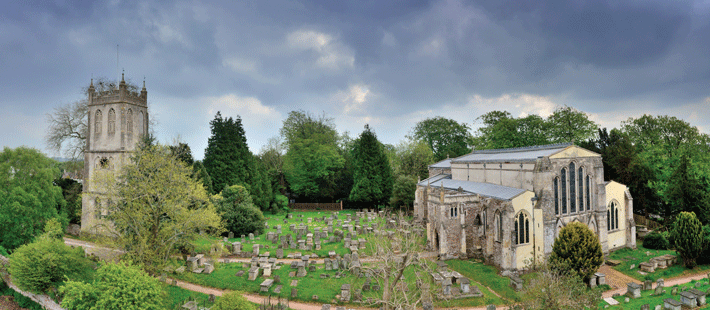
Within the rolling landscape of Gloucestershire in southwest England, at the edge of the sleepy town of Berkeley, is a hill that was for centuries one of England’s most desirable plots of land. A church, a castle, and a manor house with extensive gardens all jostle for space—testaments to the hill’s commanding view of the surrounding plains and its location at the highest navigable point of the River Severn, the longest in the United Kingdom. The setting, at once bucolic and strategic, has seen the whole of English history, from times of marginality and austerity to periods of great wealth and influence, from Neolithic hunters and a Roman temple to a kingdom of witches and Norman townhouses. Stuart Prior, an archaeologist at the University of Bristol, encouraged by this long history, commissioned a geophysical survey of the area in 2005 and has directed excavations every year since with his colleague Mark Horton. What they have found is some 6,000 years of English history—a history that shows just how much the island nation has been shaped by wave after wave of invaders.
The hill itself is asymmetrical, steeper on one side than the other. It is crowned by a stunning church, built in the twelfth century, but with earlier, Anglo-Saxon origins. Perched on the steeper slope is one of the grandest and most complete Norman castles still standing. And on the gentler side, there is a manor house surrounded by a typical English country garden that once belonged to Edward Jenner, eighteenth-century gentleman physician and pioneer of the smallpox vaccine. From the garden, a short uphill stroll leads to the castle, while a walk downhill leads into Berkeley.
In the garden today, the sweet smell of cow parsley drifts on the breeze and mingles with the pungent aroma of wild garlic. Pink cherry blossom petals rain down on a lush green lawn, and rosebuds promise glorious scents to come. But these sensual delights are not of much interest to Prior and his colleagues. Rather, the archaeologists are fascinated by the deeper geography—layers and deposits that reflect the social transitions that punctuate English history.
Historical records hint that the hill was an important location well before the Normans arrived in England in A.D. 1066 and subsequently built the castle and church. A previous renovation of the church, for example, turned up Roman tiles, a tantalizing hint. Ideally, Prior, Horton, and their team would have preferred to start their excavations at the top of the hill, around the church and its graveyard, but because digging in sacred ground was not possible, they opted to begin on the peripheries of the hill—in Jenner’s garden and, on the other side of the hill, in a paddock belonging to the castle.
With the potential for a deep, complex site below, entirely excavating several acres was never a possibility, so the geophysical surveys were critical in determining the best locations for trenches, each of which was carefully chosen to shine a pinpoint of light on the past. The early excavations confirmed that the site was indeed deep. From the disparate trenches—each like a piece in a three-dimensional puzzle—the archaeologists have succeeded in extrapolating the hill’s history and in developing a mental image of its belowground geography.
Advertisement
Advertisement
IN THIS ISSUE
From the Trenches
French Revolution Forgeries?
Off the Grid
Ham Hill's Violent History
Tracking the Ancient Apache
The Well-Dressed Dead
Lego Supports Slumping Mummy
Mississippian Burning
A Final Journey by Horse
Neanderthal Smorgasbord
Point-and-Shoot Obsidian Analysis
Idu: Lost City of Northern Iraq
Thorfinn the Mighty's Thing
The Doctor Is In
Artifact
Roman Britain's finest work
Advertisement

Recent Issues
-
 May/June 2024
May/June 2024
-
 March/April 2024
March/April 2024
-
 January/February 2024
January/February 2024
-
 November/December 2023
November/December 2023
-
 September/October 2023
September/October 2023
-
 July/August 2023
July/August 2023
-
 May/June 2023
May/June 2023
-
 March/April 2023
March/April 2023
-
 January/February 2023
January/February 2023
-
 November/December 2022
November/December 2022
-
 September/October 2022
September/October 2022
-
 July/August 2022
July/August 2022
-
 May/June 2022
May/June 2022
-
 March/April 2022
March/April 2022
-
 January/February 2022
January/February 2022
-
 November/December 2021
November/December 2021
-
 September/October 2021
September/October 2021
-
 July/August 2021
July/August 2021
-
 May/June 2021
May/June 2021
-
 March/April 2021
March/April 2021
-
 January/February 2021
January/February 2021
-
 November/December 2020
November/December 2020
-
 September/October 2020
September/October 2020
-
 July/August 2020
July/August 2020
-
 May/June 2020
May/June 2020
-
 March/April 2020
March/April 2020
-
 January/February 2020
January/February 2020
-
 November/December 2019
November/December 2019
-
 September/October 2019
September/October 2019
-
 July/August 2019
July/August 2019
-
 May/June 2019
May/June 2019
-
 March/April 2019
March/April 2019
-
 January/February 2019
January/February 2019
-
 November/December 2018
November/December 2018
-
 September/October 2018
September/October 2018
-
 July/August 2018
July/August 2018
-
 May/June 2018
May/June 2018
-
 March/April 2018
March/April 2018
-
 January/February 2018
January/February 2018
-
 November/December 2017
November/December 2017
-
 September/October 2017
September/October 2017
-
 July/August 2017
July/August 2017
-
 May/June 2017
May/June 2017
-
 March/April 2017
March/April 2017
-
 January/February 2017
January/February 2017
-
 November/December 2016
November/December 2016
-
 September/October 2016
September/October 2016
-
 July/August 2016
July/August 2016
-
 May/June 2016
May/June 2016
-
 March/April 2016
March/April 2016
-
 January/February 2016
January/February 2016
-
 November/December 2015
November/December 2015
-
 September/October 2015
September/October 2015
-
 July/August 2015
July/August 2015
-
 May/June 2015
May/June 2015
-
 March/April 2015
March/April 2015
-
 January/February 2015
January/February 2015
-
 November/December 2014
November/December 2014
-
 September/October 2014
September/October 2014
-
 July/August 2014
July/August 2014
-
 May/June 2014
May/June 2014
-
 March/April 2014
March/April 2014
-
 January/February 2014
January/February 2014
-
 November/December 2013
November/December 2013
-
 September/October 2013
September/October 2013
-
 July/August 2013
July/August 2013
-
 May/June 2013
May/June 2013
-
 March/April 2013
March/April 2013
-
 January/February 2013
January/February 2013
-
 November/December 2012
November/December 2012
-
 September/October 2012
September/October 2012
-
 July/August 2012
July/August 2012
-
 May/June 2012
May/June 2012
-
 March/April 2012
March/April 2012
-
 January/February 2012
January/February 2012
-
 November/December 2011
November/December 2011
-
 September/October 2011
September/October 2011
-
 July/August 2011
July/August 2011
-
 May/June 2011
May/June 2011
-
 March/April 2011
March/April 2011
-
 January/February 2011
January/February 2011
Advertisement





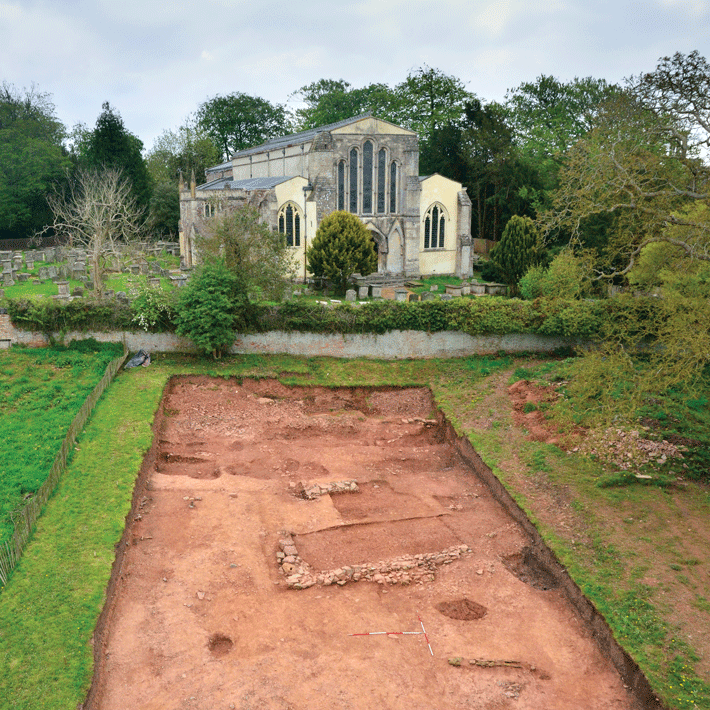
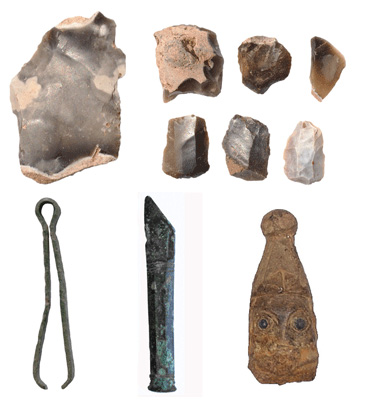 On the other side of the hill, in Jenner’s garden, a large assemblage of Roman pottery has emerged, including a strainer and sherds from a mortaria (a bowl to crush herbs and spices) found in 2013. The team is almost certain that there must be a Roman building somewhere on the hill. Siân Thomas, site supervisor at the paddock trench, thinks the domestic pottery points to the existence of a Roman villa, but Twinn has another theory.
On the other side of the hill, in Jenner’s garden, a large assemblage of Roman pottery has emerged, including a strainer and sherds from a mortaria (a bowl to crush herbs and spices) found in 2013. The team is almost certain that there must be a Roman building somewhere on the hill. Siân Thomas, site supervisor at the paddock trench, thinks the domestic pottery points to the existence of a Roman villa, but Twinn has another theory.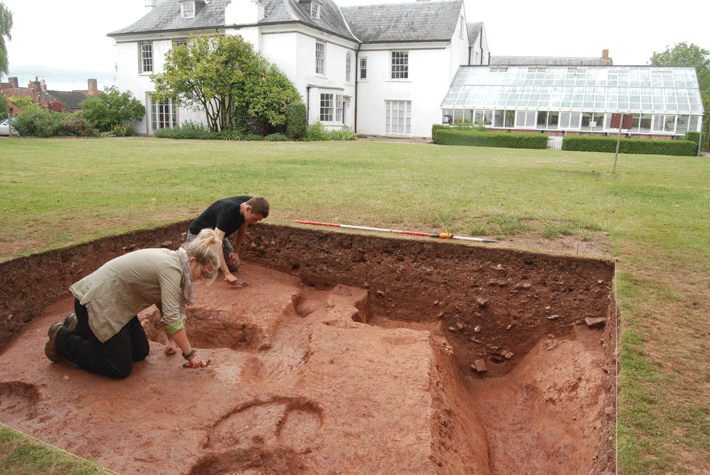
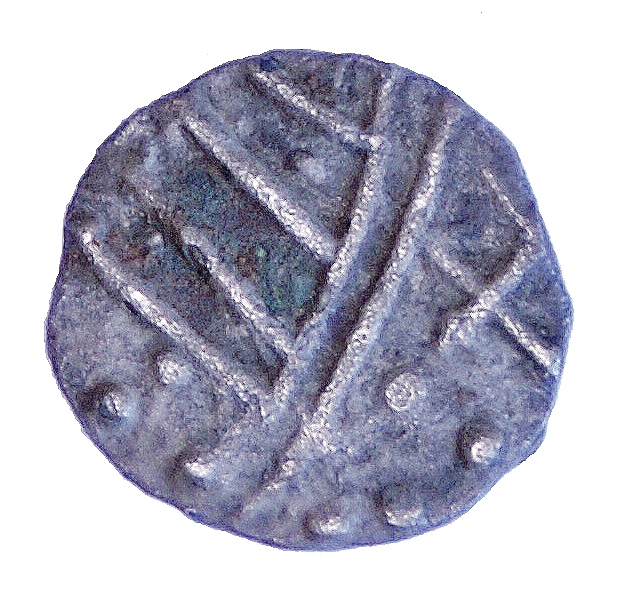 So what were these high-status Saxons doing? The excavations have confirmed that Berkeley was home to one of a handful of “minsters” in England. Minsters were forerunners of what we know today as monasteries and also served as a kind of exclusive club for wealthy Christians. The hilltop was a good place for one of these Christian strongholds, likely for the same reasons the Romans had settled there—it is well connected by the River Severn and is defensible. At the time, these powerful Christian communities both resurrected the religion, which had largely left the island with the Romans, and helped return order through the formation of parish churches.
So what were these high-status Saxons doing? The excavations have confirmed that Berkeley was home to one of a handful of “minsters” in England. Minsters were forerunners of what we know today as monasteries and also served as a kind of exclusive club for wealthy Christians. The hilltop was a good place for one of these Christian strongholds, likely for the same reasons the Romans had settled there—it is well connected by the River Severn and is defensible. At the time, these powerful Christian communities both resurrected the religion, which had largely left the island with the Romans, and helped return order through the formation of parish churches.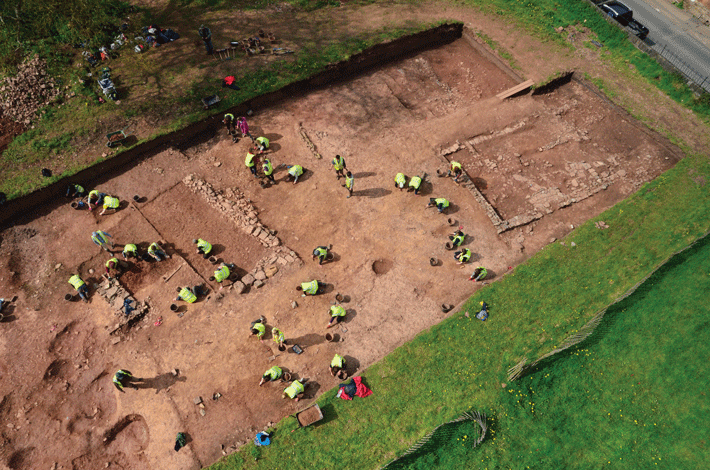
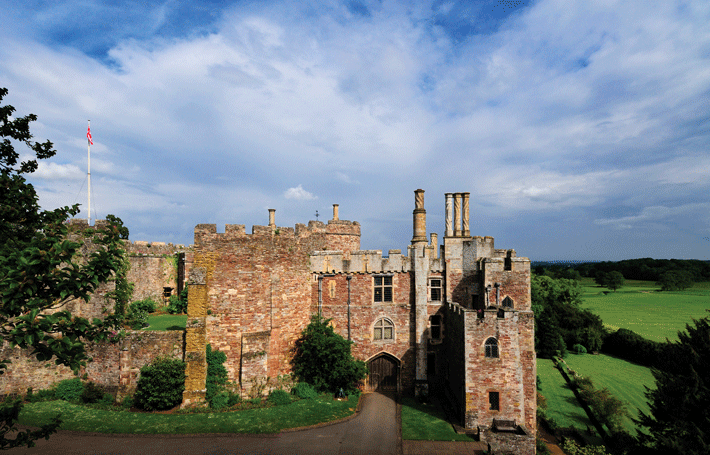
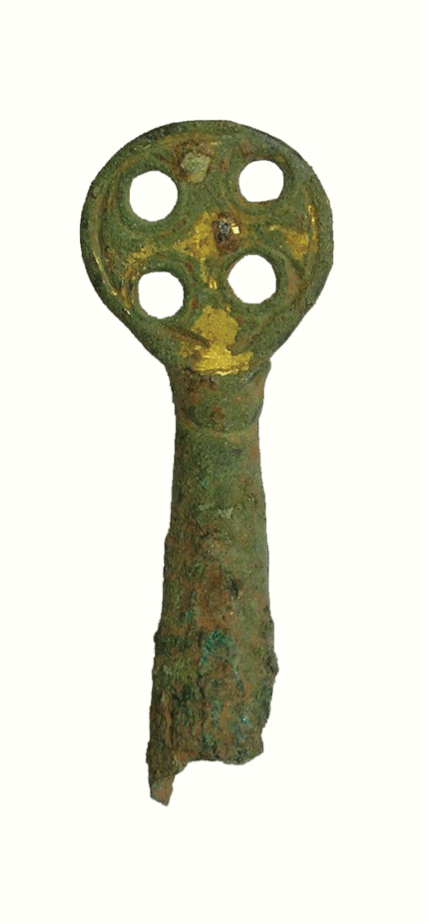 While it is true that the hill was desirable real estate in part because it was defensible, only so much could be done when the Vikings began to arrive in numbers. “We know that in A.D. 910 and 911, the Vikings sailed a fleet up the Severn, and Berkeley would certainly have been a target,” says Prior. By the mid-tenth century, the Viking raids appear to have taken their toll and the minster had gone into decline.
While it is true that the hill was desirable real estate in part because it was defensible, only so much could be done when the Vikings began to arrive in numbers. “We know that in A.D. 910 and 911, the Vikings sailed a fleet up the Severn, and Berkeley would certainly have been a target,” says Prior. By the mid-tenth century, the Viking raids appear to have taken their toll and the minster had gone into decline. 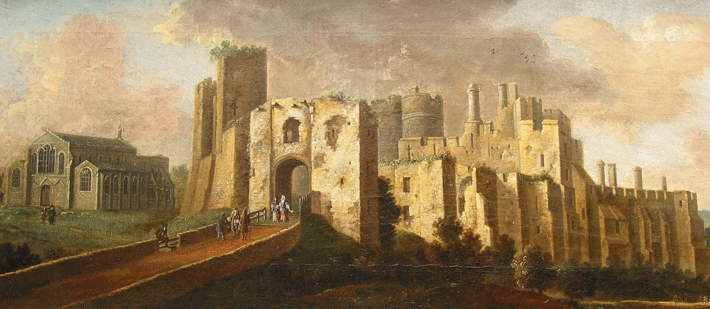
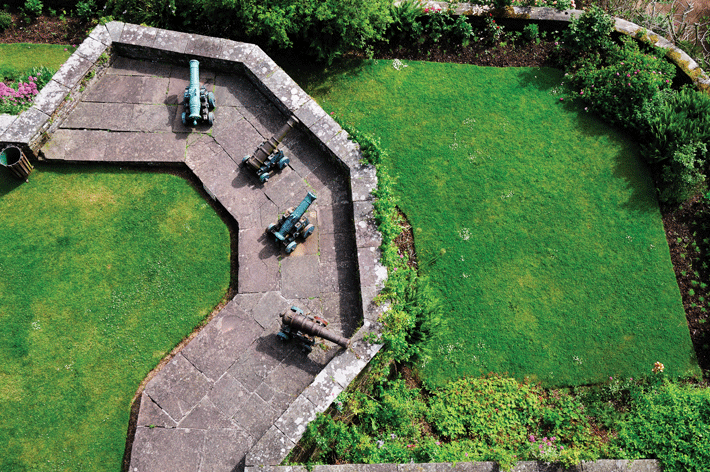 As a young physician, Jenner was intrigued by folklore that stated that dairymaids who caught cowpox could not catch smallpox, a feared disease that killed between 10 and 20 percent of the population. His experiments with cowpox—involving the eight-year-old son of his gardener—gave birth to the smallpox vaccine. He would later vaccinate the poor of the district, at no charge, in his deluxe shed in the garden, known as the “Temple of Vaccina.” The garden was, in part, his inspiration, and observation of it (including experiments where he fertilized the vegetation with blood) might have influenced his research. In the garden itself, near the Temple of Vaccina, Prior and his team have uncovered, along with numerous clay pipe stems and medicine bottles, the remains of a dissected dog. “We know that Jenner had a number of dogs, so the likelihood is that it was one of his own dogs, which he decided to dissect after it died,” says Prior.
As a young physician, Jenner was intrigued by folklore that stated that dairymaids who caught cowpox could not catch smallpox, a feared disease that killed between 10 and 20 percent of the population. His experiments with cowpox—involving the eight-year-old son of his gardener—gave birth to the smallpox vaccine. He would later vaccinate the poor of the district, at no charge, in his deluxe shed in the garden, known as the “Temple of Vaccina.” The garden was, in part, his inspiration, and observation of it (including experiments where he fertilized the vegetation with blood) might have influenced his research. In the garden itself, near the Temple of Vaccina, Prior and his team have uncovered, along with numerous clay pipe stems and medicine bottles, the remains of a dissected dog. “We know that Jenner had a number of dogs, so the likelihood is that it was one of his own dogs, which he decided to dissect after it died,” says Prior.
